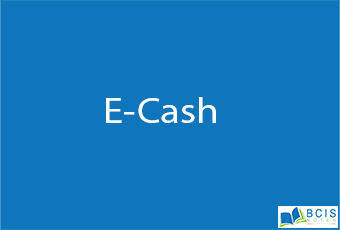
E- cash:
Similar to regular cash, e-cash enables transactions between customers without the need for banks or other third parties. When used, e-cash is transferred directly and immediately to the participating merchants and vending machines. Electronic cash is a secure and convenient alternative to bills and coins.
This payment system complements credit, debit, and charge cards and adds additional convenience and control to everyday customer cash transactions. It usually operates on a smart card, which includes an embedded microprocessor chip. The microprocessor chip stores cash value and the security features that make electronic transactions secure. Mondex, a subsidiary of MasterCard (Mondex Canada Association) is a good example of e-cash.
It is transferred directly from the customer’s desktop to the merchant’s site. Therefore, e-cash transactions usually require no remote authorization or personal identification number (PIN) codes at the point of sale. It can be transferred over a telephone line or over the Web. The microprocessor chip embedded onto the card keeps track of the e-cash transactions.
Using it the customer has two options: a stand-alone card containing e-cash or a combination card that incorporates both e-cash and debit .
How a typical e-cash system works:
A customer or merchant signs up with one of the participating banks or financial institutions. The customer receives specific software to install on his or her computer. The software allows the customer to download “electronic coins” to his or her desktop. The software manages the electronic coins. The initial purchase of coins is charged against the customer’s bank account or against a credit card. When buying goods or services from a web site that accepts e-cash, the customer simply clicks the “Pay with e-cash” button. The merchant’s software generates a payment request, describing the item(s) purchased, price, and the time and date. The customer can then accept or reject this request. When the customer accepts the payment request, the software residing on the customer’s desktop subtracts the payment amount from the balance and creates a payment that is sent to the bank or the financial institution of the merchant, and then is deposited to the merchant’s account.
The attractive feature of the entire process is its turnaround time which is a few seconds. The merchant is notified and in turn ships the goods.
If you liked our content Introduction to E-cash, then you may also like Introduction to Electronic Payment

Leave a Reply